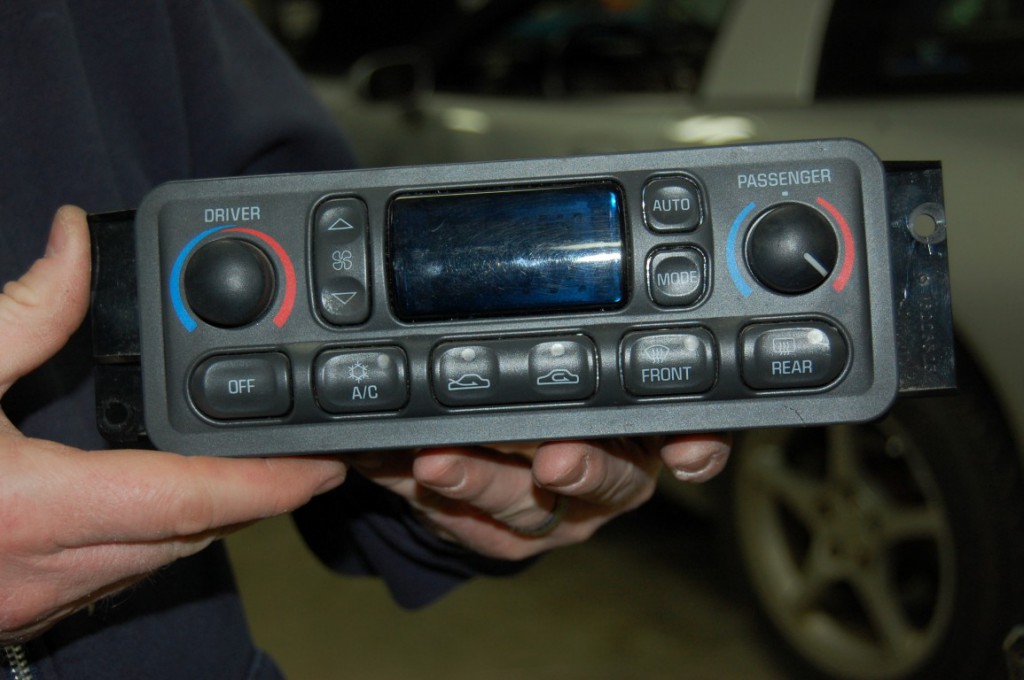Spring is just around the corner and as the temperature rises, so does our desire for an A/C system that performs at optimal levels. Although it is still chilly in many areas, now is the time to tackle any pesky A/C issues your C5 may have before the toasty warmth of summer returns. The four most common A/C problems C5 Corvettes experience (aside from low Freon levels) are air delivery problems, temperature control issues, malfunctioning A/C control panels, and compressor failure.
Air delivery problems are generally the result of a loss of vacuum. These problems range from the relatively benign to potentially catastrophic. On the minor end of the scale would be vacuum hoses that have been inadvertently disconnected. If you or another person recently worked near the rear of the engine, for example on the intake manifold, it is quite possible that a vacuum line was either intentionally or unintentionally removed. Oh, if we should all be so lucky that the issue can be resolved so simply! Unfortunately, on the other side of the spectrum there are the nightmare scenarios such as an extensive battery acid leak. These situations are not to be taken lightly because not only can they damage vacuum tubing and cause a vacuum leak and subsequent A/C issue, they can severely damage your main electrical harness, Powertrain Control Module (PCM) and Traction Control Module (TCM) that reside under the battery. Here is to hoping that your air delivery problem is only the result of a minor vacuum loss!
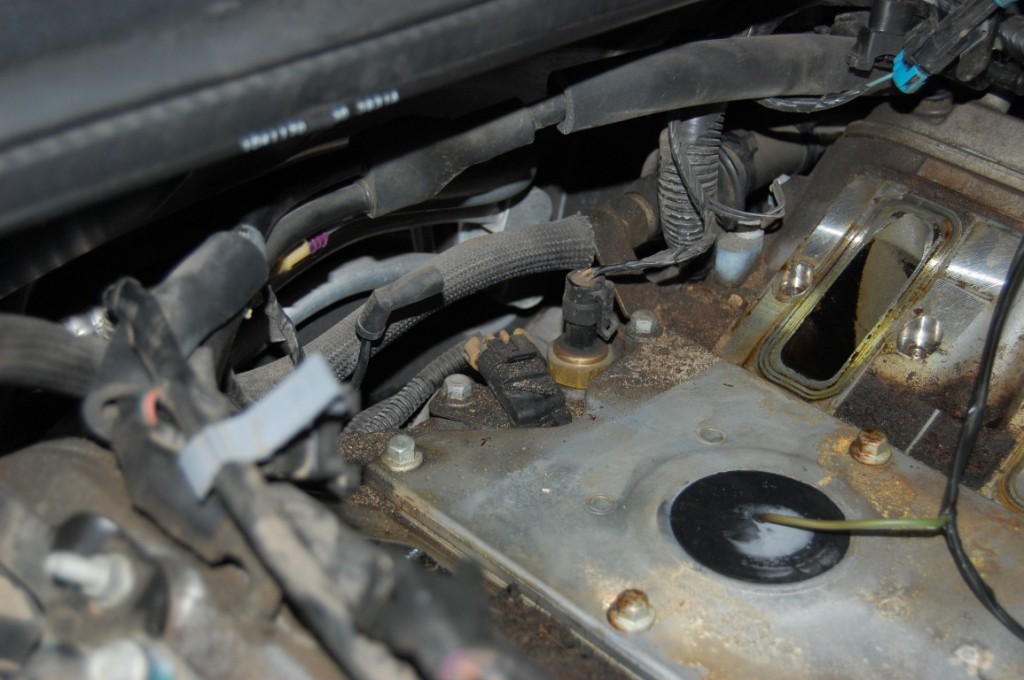 This is the back of the intake where the oil sending unit is located. Notice the vacuum fitting adjacent to the oil sending unit. If you or someone else has recently worked in this area and you now have a vacuum leak and A/C troubles, this is definitely an area to check out.
This is the back of the intake where the oil sending unit is located. Notice the vacuum fitting adjacent to the oil sending unit. If you or someone else has recently worked in this area and you now have a vacuum leak and A/C troubles, this is definitely an area to check out.
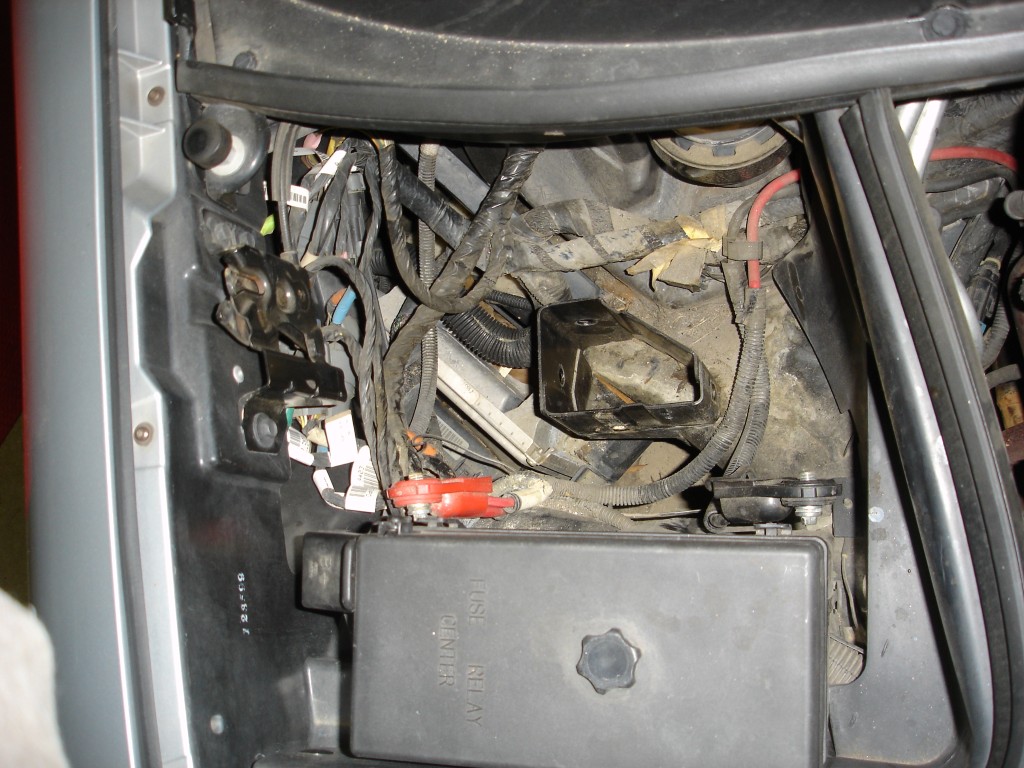 The main electrical harness, Powertrain Control Module (PCM), and Traction Control Module (TCM) are housed beneath the battery and battery tray, making battery leaks a costly affair. To sleep soundly at night, a battery mat ( Corvette Central part number 171002) is highly recommended. The mat absorbs battery acid and neutralizes it.
The main electrical harness, Powertrain Control Module (PCM), and Traction Control Module (TCM) are housed beneath the battery and battery tray, making battery leaks a costly affair. To sleep soundly at night, a battery mat ( Corvette Central part number 171002) is highly recommended. The mat absorbs battery acid and neutralizes it.
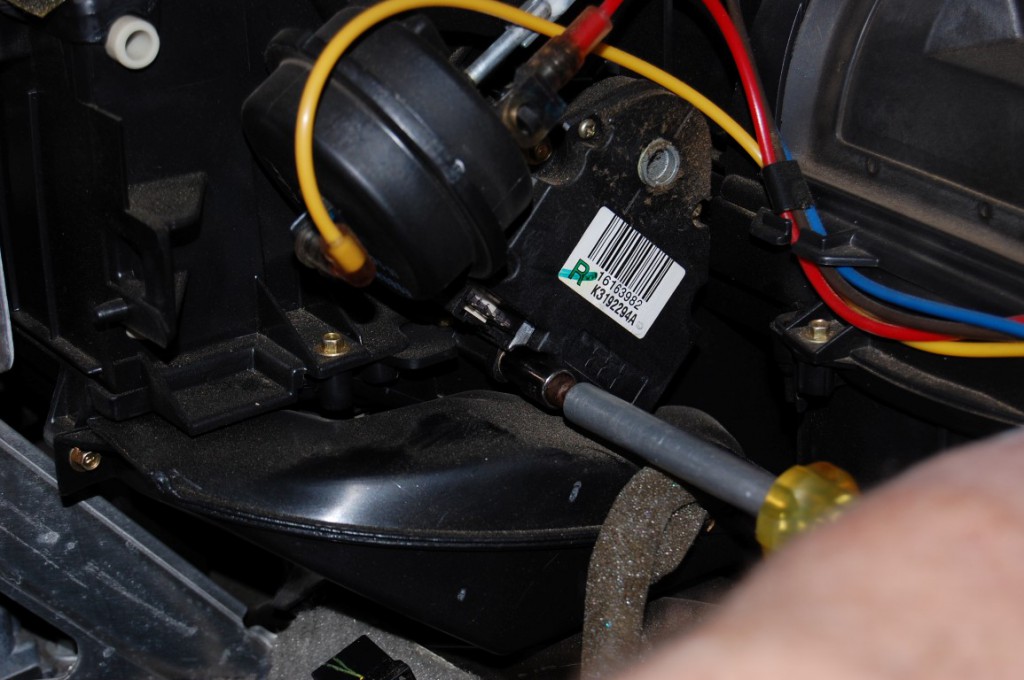 An inability to obtain the temperature you desire is usually the fault of the electronic temperature door actuator. A faulty electronic temperature actuator can easily cause vehicle occupants to believe they are experiencing a health problem because the temperature is likely to randomly alternate between cold and hot. Another failure is a complete lack of temperature control. Two blend actuators, (part number 455093), are required per car.
An inability to obtain the temperature you desire is usually the fault of the electronic temperature door actuator. A faulty electronic temperature actuator can easily cause vehicle occupants to believe they are experiencing a health problem because the temperature is likely to randomly alternate between cold and hot. Another failure is a complete lack of temperature control. Two blend actuators, (part number 455093), are required per car.
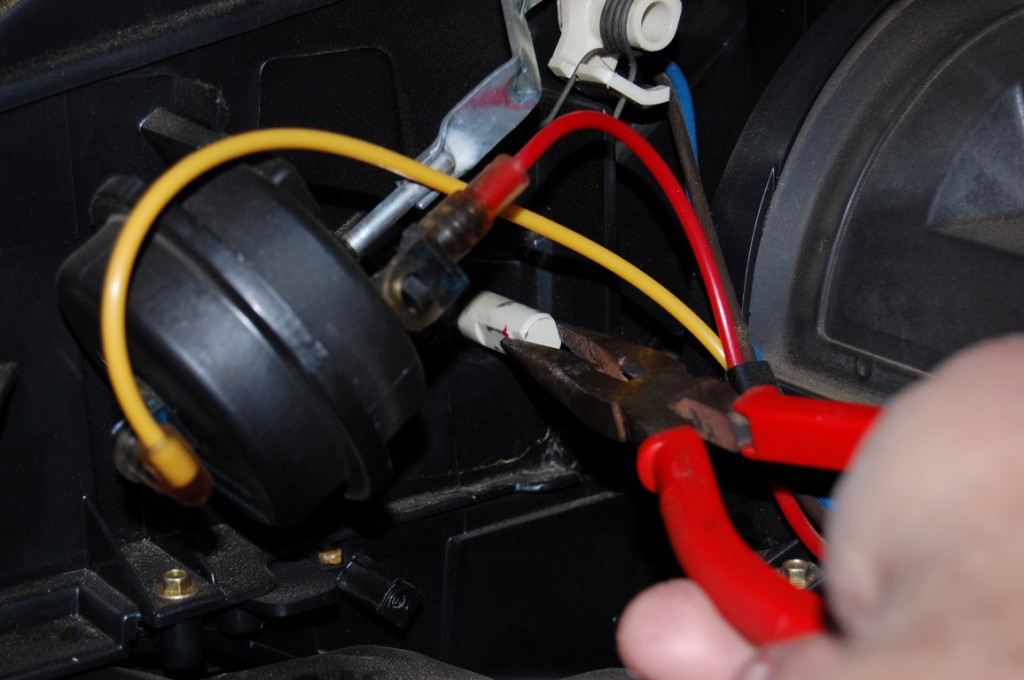 Before you replace the electronic temperature door actuator, check to make sure that the door is not sticking. Replacing the actuator is a moot point if the door is stuck. A set of pliers can be used to test the operation of the door; using a set of pliers on the rod is a more accurate way of ensuring that the shaft is not binding. To date, we have not encountered any binding or stuck door issues, but anything is possible.
Before you replace the electronic temperature door actuator, check to make sure that the door is not sticking. Replacing the actuator is a moot point if the door is stuck. A set of pliers can be used to test the operation of the door; using a set of pliers on the rod is a more accurate way of ensuring that the shaft is not binding. To date, we have not encountered any binding or stuck door issues, but anything is possible.
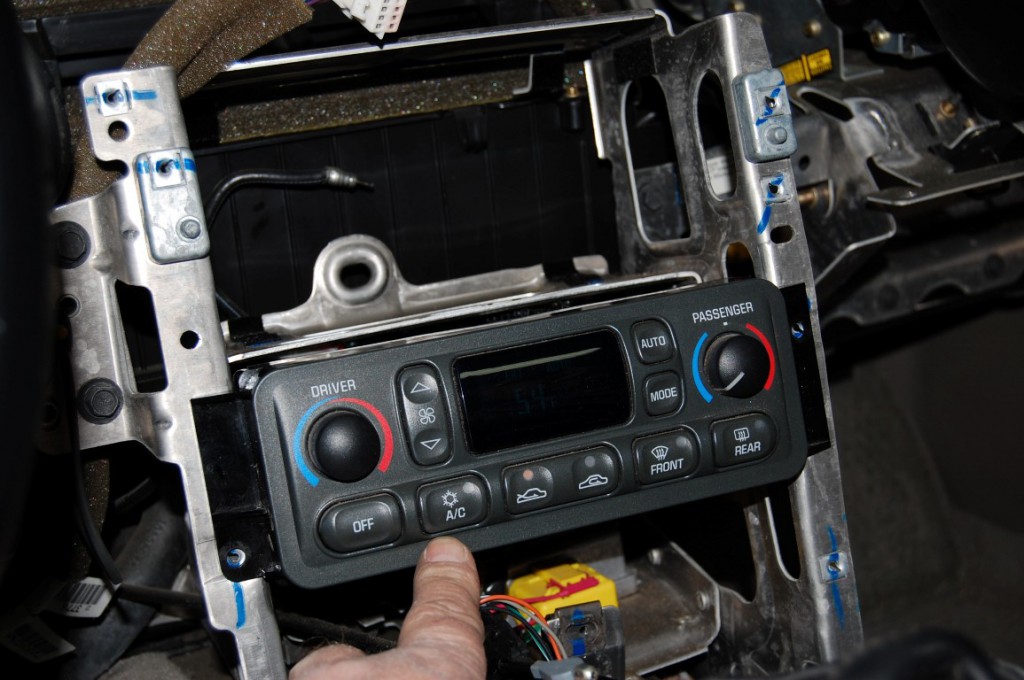 This is another common problem many C5 owners face. It certainly is difficult to set the HVAC system to your desired temperature when the control panel is entirely blank. In this case, you will need to either replace the A/C control panel or have it repaired. Cold solder joints and failed backlight bulbs are the typical problem. Fourteen incandescent along with five LED bulbs are soldered into the circuit boards. Like all incandescent bulbs today, don’t expect them to last more than five years. Intermittent lighting of the center LED display is a dead giveaway that there are cold solder joints acting up.
This is another common problem many C5 owners face. It certainly is difficult to set the HVAC system to your desired temperature when the control panel is entirely blank. In this case, you will need to either replace the A/C control panel or have it repaired. Cold solder joints and failed backlight bulbs are the typical problem. Fourteen incandescent along with five LED bulbs are soldered into the circuit boards. Like all incandescent bulbs today, don’t expect them to last more than five years. Intermittent lighting of the center LED display is a dead giveaway that there are cold solder joints acting up.
Corvette Central can repair the digital readout of the heater air control for you; just look for part number 455220.
The last of the most common C5 A/C issues is compressor failure due to leakage. Compressors are the workhorses of the A/C system and are subjected to high temperatures and high PSI in their efforts to keep us cool. In the early stages of compressor failure, you will likely notice diminished cooling as the refrigerant level drops off. Remember this bit of advice: every time refrigerant leaks out, so does a portion of the system’s lubricating oil. Topping off the A/C system annually without adding lubricant assures a slow compressor death. At that point you may notice belt squealing as the compressor seizes.
Amazingly, compressors utilize just a few ounces of lubricant. In fact, adding too much oil can be detrimental and should be avoided. Of course, not having enough lubricant is also a problem. Lubricants can either be installed in incorrect amounts (too much / too little), leak from hoses or connections, or break down due to contamination. If you replace the compressor, be aware that any debris left over from a previous failure can shorten its life. It is highly recommended that you thoroughly flush the system before installing the new compressor. Corvette Central sells a new A/C compressor with clutch pulley, part number 455146. The A/C compressor hose, part number 455234, is also available if the current hose is in poor condition.
Anytime the refrigerant system is opened up, A/C accumulator replacement is mandatory to ensure minimal moisture in the system and that clean refrigerant is coursing through the system. The A/C accumulator acts as a filter; if the A/C system is opened, moisture can enter the system and cause havoc. To order a replacement, use part number 455034.
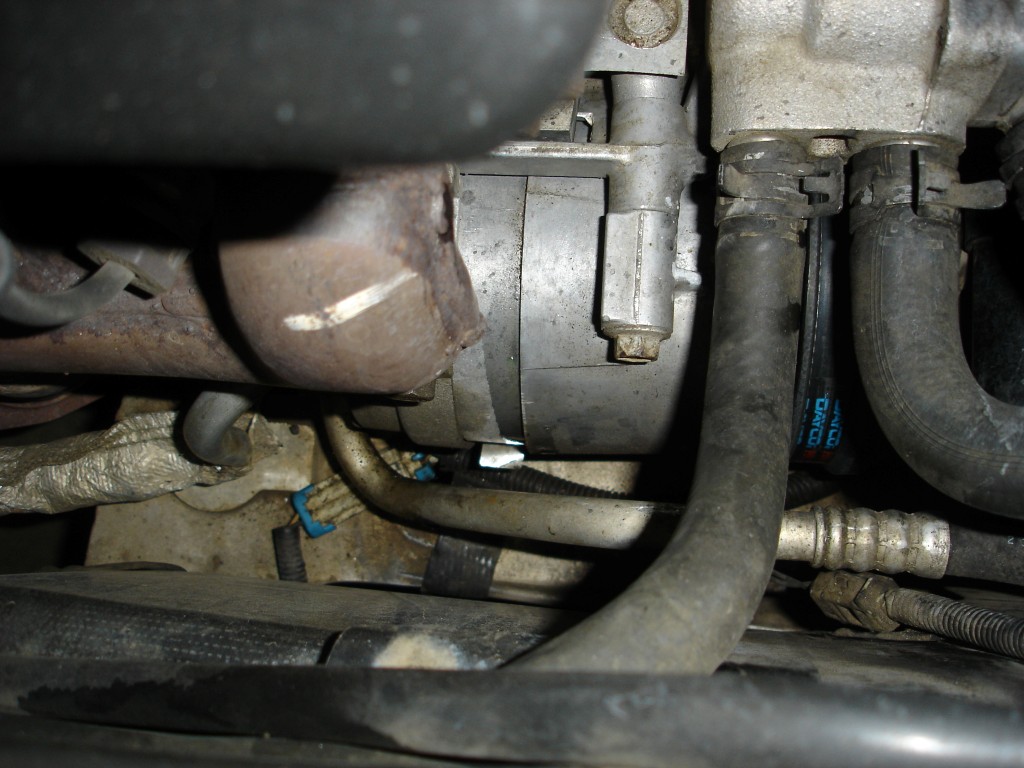 This compressor has an obvious leak, but keep in mind that compressor troubles may not always be this straightforward. There is green tinted lubricating oil on the A/C high side aluminum tube, indicating that refrigerant oil is being blown out of the compressor case seals. This is very common on high mileage C5s.
This compressor has an obvious leak, but keep in mind that compressor troubles may not always be this straightforward. There is green tinted lubricating oil on the A/C high side aluminum tube, indicating that refrigerant oil is being blown out of the compressor case seals. This is very common on high mileage C5s.
Replacing the A/C compressor is quite difficult due to space constraints. Once the mounting bolts are removed, it takes some wrangling to get the compressor out of the engine compartment. There are A/C do-it-yourself recharge kits with and without oil charge that can be used for a system top-off, but these kits are not recommended after compressor replacement. A certified A/C shop should evacuate the system and install the correct amount of A/C refrigerant. Control panel removal and electronic temperature actuator replacement will require most of the dash to come apart, and instructions for accessing those areas will be highlighted in a separate post.
Here’s to keeping your cool this summer!
Story and photos courtesy Chris Petris
